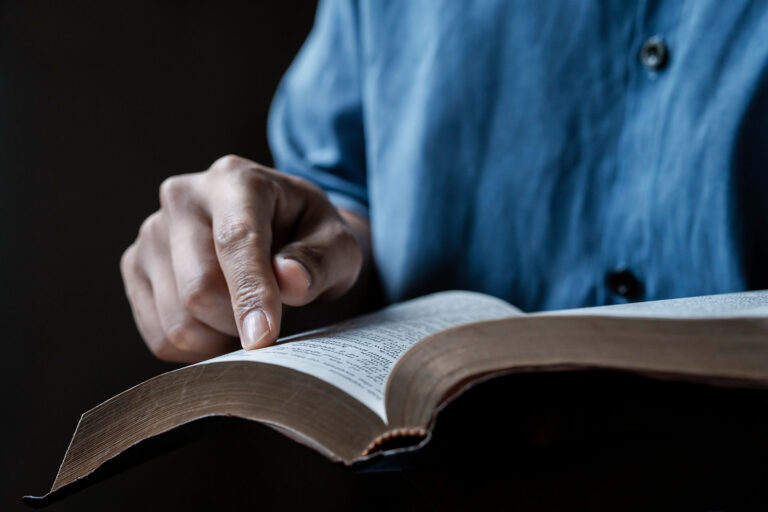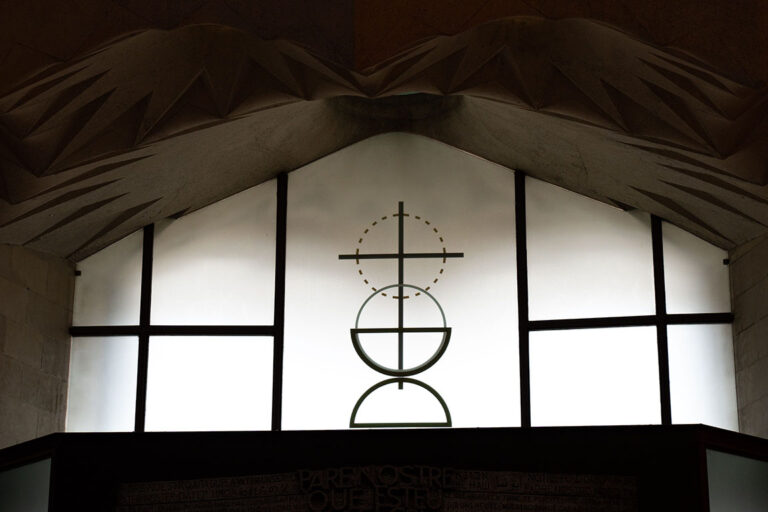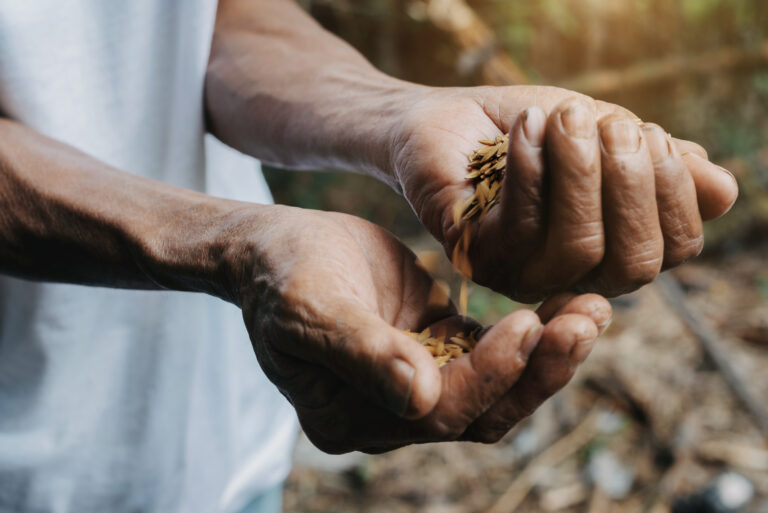Inspirations, not standards
I had already taken the high school seminary entrance examinations in Cebu, when my father got wind of the neighborhood news that his friend’s son had just graduated from the seminary in San Carlos City, Negros Occidental, and that, in fact, his friend’s other son was also a seminarian in the same seminary, and would be in his second year of high school at the opening of classes in June of 1979. So, my father told me that if ever I would finally decide to enter that seminary, at least, I would not feel too lonely and isolated, because I would meet some familiar faces over there. I agreed.
So, one day in the late summer of 1979, my father took me to San Carlos City [Negros Occidental] in the hope that I could still take the entrance examinations for the minor seminary of Colegio de Sto. Tomás-Recoletos, notwithstanding the shorter and more financially demanding lead time between that day and the fast-approaching opening of the school year in June.
That morning we boarded the nine o’clock ferry boat bound for San Carlos City. Halfway through the hour-and-a-half boat trip, though, the waves turned bigger and stronger in between the islands of Cebu and Negros. The boat started swaying left and right. I was alarmed and nervous because to my recollection it was just my second time to take a ferry boat. And yet, amidst that nervousness, it was also funny to think—considering that I was already twelve years old then, and still my father instructed me to remain seated and cover my three hair whorls with a handkerchief, and never to expose them to the strong winds so that my hair whorls would not trigger a whirlpool in the middle of the vast Tañon Strait, and I had to obey him, anyway, even if I never adhered to that belief. “How could my three hair whorls instigate a whirlpool?” I said to myself in childish defiance.
Around ten-thirty in the morning, the ferry boat arrived in San Carlos City, and in no time we disembarked. We took a pedal-driven tricycle bound for the high school seminary, and, providentially, the vocation director was right there standing near the registrar’s office, talking with some teachers, so that when my father asked around how I could take the entrance exams, a teacher immediately alerted the vocation director that there was a new candidate.
The Rev. Fr. Regino Bangcaya, OAR, gave me a battery of tests: one for profiling purposes, another for academic assessment, and another for IQ identification. I never knew how I passed the exams. I did not even know what my score was. The only thing I could recall for sure was that there was an item that asked, “Why I do I want to enter the seminary?” The question provided examinees with multiple answer options. And how in the world did it ever dawn on me to tick off the answer on the other column that read, “I want to be a saint”? Did I, as a twelve-year old boy, ever realize, at that time, the infinity of grace and the enormity of personal sacrifice required of a saintly life?
* * *
“And did that personal desire to become a saint ever get translated—say, over the past ten years, at least—to anywhere near the state of grace?” Fr. Matthew asked me quite arrestingly.
I instinctively shrugged off the thought and answered him, “I honestly do not think so.” “It would have been easier,” I continued, “to determine my level of holiness if it were as quantifiable as a hodometer, say, having a grace-meter in one’s palm, which one could just check anytime.”
The friendly Father Matt shook his head and grinned for a while, perhaps, with a mixture of disbelief and friendly approval. “Come on, you continue your story. Tell me more about that desire for holiness.”
My spiritual director wanted me to go down memory lane to discern the trajectory of my spiritual journey and where that holy desire was heading.
* * *
Like many others, I initially thought that priesthood was just of one kind, like the diocesan priest in our parish. It surprised my young mind to see another kind of priests in our high school seminary—those who wore a white hood and tunic, with a black leather cincture around their waist, with an awkwardly extended belt hanging in front of them, somehow let loose to point downward, thanks to the law of gravity. But if in your younger days, you saw many of them in that religious habit, the sense of uniformity would surely contribute to the beauty and simplicity of what they wore, and, conversely, would then remove any sheen of awkwardness that you might have previously found in them.
It surprised me even further when one early evening in September of 1979, our Spanish priests introduced to us a visiting old priest, sporting a long white beard, in yet another religious habit. Our Spanish formators told us to welcome him with a warm applause, and we seminarians obliged on cue. He looked very holy and quite elegant in his dark brown habit, which consisted of a sturdy hood, a loosely hanging scapular, a cotton tunic that was neatly pleated on each side—and what would otherwise be just a loose tunic was crisply bound by a black (or was it dark brown?) leather cincture. The late Fr. Juan Garde, OAR, our Prefect of Discipline, described the holy man as a Dutch Carmelite friar from a monastery in Escalante, Negros Occidental who missed the boat bound for Toledo City that afternoon, and would therefore stay overnight in our seminary guest room. From where I was seated in that wide study hall, I could see a living saint. How I wish I could live his kind of life, but I was already with the Recollects.
* * *
In my first year of college at what was then Seminario Mayor-Recoletos in Baguio City, I happened to read in a Sunday magazine a feature article on the vocation and life inside the monastery, run by the Order of Cistercians-Strict Observance (Trappists) in the island of Guimaras, in the south. The thought of prayer, solitude, and farming enchanted me no end, since I grew up in the rice farm, the corn field, and a backyard vegetable garden. Back home, we raised goats, pigs, cows, geese, and chickens, among other farm animals. My elder brother had a small escargot pond. In another hut, some twenty meters away from our house, we stored our dried grains of rice, ready for the milling. Farming was life in that laidback portion of the city. Our house was a veritable barn. Rough and raw!
No wonder, the simplicity that characterized the life inside the Trappist monastery made me entertain thoughts of shifting to their kind of life. Towards the end of my first year of college, secretly—and by secretly, it meant at that time, using a different return address. I could still remember that small nook of a tailoring shop somewhere near the University of Baguio which served as a safe space for all kinds of seminarians, including the weary, the restless, the rebellious, the naughty, and the romantic—, I wrote a letter to the abbot of that monastery, inquiring if I could join them soon. After almost a month of waiting, I received the abbot’s reply, telling me that I was too young then to embrace their life, and that I just had to wait until I turned twenty-five, and, perhaps, weigh things over when that time would finally come.
* * *
In the summer of 1984, I took up additional units in Effective Communication (EffCom), and attended another class in Argumentation and Debate in the University of San Jose-Recoletos in Cebu City. I stayed at that time in my aunt’s house located in what was then a nearby town of Talisay, some twelve kilometers south of Cebu City. On Sundays, I saw to it that I would be able to attend the English Mass in the Parish Church of St. Joseph—never mind if it was located right in the bustling commercial hub of Brgy. Tabunok. I did have one of my most meaningful and memorable confessions in that church one Sunday, and it turned out that when it was time for Mass, the priest-confessor, who was a guest priest from a nearby Salesian seminary in Lawaan, was the officiating priest. How I treasured all the words of this holy man from the cavernous confessional box to the resplendent altar. I loved his homilies, and I never wanted to miss any of his regular Masses there. I knew him only as Father Pat, SDB (is he now the Bishop of Bacolod?). I was one of his regular followers then.
Attracted to his holiness of life, I decided to apply to the Salesians of Don Bosco. So, in my second year of college, I wrote a letter, again secretly, to Fr. Remo Bati, SDB. He must have been at that time, Rector, if not the Vocation Director, of the Salesian College Seminary in Canlubang, Laguna. Fortunately, or not, he never replied to my letter of application. But I still wanted to be holy, like the holy Salesian priest, Father Pat.
* * *
The restlessness of that journey toward a more sacred goal swerved quite fast, after two years of studies in our Mira-nila theologate. In the summer of 1990, I was assigned to teach Religious Education at San Sebastian College-Recoletos in Cavite City. Just imagining myself already capable of working and earning a living was fodder to the thought of being empowered. Although I knew that my teaching job in San Sebastian was only up to the end of summer, still the experience triggered a lot of possibilities for me. I was already determined to leave the seminary. So, on one of those weekends, I commuted back to Quezon City and I handed to then-Rector, Fr. René Paglinawan, OAR, a formal letter addressed to the Chapter of Formation asking for rest, or did I ask for a dispensation from my vows? I could not recall what I exactly wrote in that letter. I went back to Cavite the following day, a Sunday. On the bus, my mind entertained all possibilities that I could imagine. Maybe, I would teach in a small private school. Maybe, on Saturdays, I would take up some Masteral units in De La Salle University, Taft Ave., Manila. Maybe, I would just go back home, and take care of our pigs, or go back to the farm. I was old enough to make that life-changing decision anyway. Forget about holiness.
On the next weekend, I left Cavite City, and went straight to a mall in Quezon City. There I spent my entire summer allowance to buy some large luggage to collect my things and go.
I proceeded to our theology house, the Recoletos Seminary in Mira-nila. I entered by the side door of the second building, passed by the chapel, said a little “hi” and “good-bye” to my dear Jesus—the Jesus I once was so determined to follow—and then I went straight upstairs to my room.
But even as I was slowly and secretly folding my clothes, Fr. Dionisio Selma, OAR, then Master of the Professed, knocked on my door. He invited me to his room and we talked for a while (or did it last for an hour?). In so many words, all he asked of me was to give my vocation a chance. I could only afford to give a tentative answer. In my short dialogue with then-Rector Fr. René Paglinawan, OAR, he insisted that what I was going through was just something developmental, perhaps, it had something to do with that sudden enlightenment or awareness of what I was capable of doing, such as teaching in a college. How did he ever read my mind?
* * *
Summer classes in Cavite City were over. And I was back in the seminary, hesitantly—the kind of hesitation that would last for a year, making the whole of my third year of theology the most boring and lifeless. I still cooperated with the schedule. I still studied a bit, and still got high marks for whatever worth they were, if only to give my vocation a chance.
* * *
For one reason or another, there were days when we would celebrate our morning Masses in the bigger church of Our Lady of Consolation, instead of having them in the seminary chapel.
After Mass, we would normally leave the church and go back to the seminary compound for breakfast. But I noticed there was this lay parishioner, a tall young man, who would always stay behind for silent moments, for personal prayers, when most everyone else would have already left the church. He looked decent, formal, serene, and holy. Suddenly, I came to the realization that I could be a layman and still be holy like him. So, why bother pursue the priesthood to be holy? I could still be holy as a layman!
* * *
“Okey, stop there,” Father Matt turned to me, arms cradled on his chest.
“Obviously, the ambivalence of your desire, and that oscillating dynamism to leave the seminary vis-à-vis the desire to be a religious priest have to be seen, more clearly, in that context of your pursuit of holiness. If I did not know your story, it would have been easy for me to dismiss all those desires to leave the seminary as mere temptations along the way. But, based on your life’s story, or, at least, from what I understood as your life’s story, I would say your pursuit of holiness is valid…and all these things about holy people and holy places you mentioned—the Carmelite friar, the Trappist monastery, Father Pat, and that prayerful layman in your parish—they are simply your lights along the way. Don’t you think God sent them to you to inspire you?”
“Your soul is hungry for inspirations. They are your inspirations. You see, every time you are inspired and you look up to them with so much respect, reverence, and fascination; you do not have to follow them, to be like them, or to be them! You have your own life. You have your own journey. They are your inspirations, not standards, Ferdinand. Jesus is the standard beyond standards. When you put people high on a pedestal as standards, chances are you will try to compete with them, and then you will say to yourself, perhaps, in cryptic pride, that you have raised the bar of holiness even higher. And there is no end to that self-proving. Competition in spiritual life just does not make sense. Saints, for instance, are not standards that you are supposed to duplicate or photocopy. There is only one Anthony of Padua, only one Augustine, only one Benedict, and only one Francis of Assisi. Much as you want to imitate them, you are still Ferdinand!
“Instead of wasting your life and energy, looking for holy people to inspire you, why don’t you be holy yourself and start inspiring other people? Instead of wishing that all your formators were as holy as these people you mentioned, why don’t you start being holy yourself? Come on, start with your humanity. Authentic humanity, that is! Walk the journey. Noone else could walk that journey for you. Welcome to spiritual life!”
* * *
Father Matt stood up and he invited me to go to their community chapel. He prayed over me. He blessed me. I cried.
On my way home to Recoletos Seminary, the words of Father Matt echoed in my ears and heart… “holy people are inspirations, not standards!”







